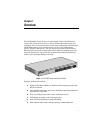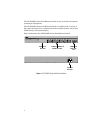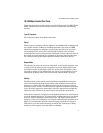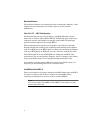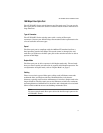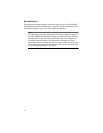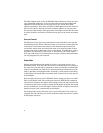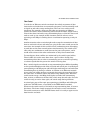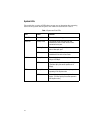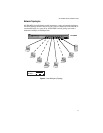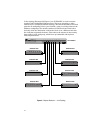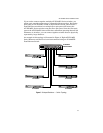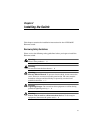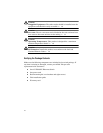AT-FS709FC Series Installation Guide
9
Flow Control
In order for an Ethernet switch to maintain the orderly movement of data
between the end nodes that are connected to its ports, it will occasionally need
to signal an end node to stop sending data. This can occur under several
situations. For example, when two end nodes are operating at different
speeds, the switch, while transferring data between the nodes, might need to
instruct the faster end node to stop transmitting data to allow the slower end
node to catch up. An example of this situation would be when a server
operating at 100 Mbps is sending data to a workstation operating at only 10
Mbps.
Another situation when a switch might need to stop the transmission of data
from an end node is if two end nodes are vying for the same switch port at the
same time. An example of this would be if two workstations were attempting
to send data to the same network printer simultaneously. The switch could
allow only one workstation to send data out the port to the printer, and it
would need to instruct the other workstation to delay data transmission.
To some degree, these conflicts are minimized by the switch’s port buffers.
These buffers are used to store data when a port is either already busy
transmitting other data or when a transmitting port on a switch is operating
at a slower speed than the port on the switch receiving data.
How a switch signals an end node to stop transmitting data differs depending
on the speed and duplex mode of the end node and switch port. A twisted pair
port operating at 100 Mbps port and half-duplex mode stops an end node from
transmitting data by forcing a collision. A collision on an Ethernet network
occurs when two nodes attempt to transmit data using the same data link at
the same time. A collision causes end nodes to stop sending data. When the
switch needs to stop a 100 Mbps, half-duplex end node from transmitting
data, it forces a collision on the data link, which stops the end node. Once the
switch is ready to receive data again, the switch stops forcing collisions.
A twisted pair port or fiber optic port operating at 100 Mbps and full-duplex
mode uses PAUSE frames, as specified in the IEEE 802.3x standard.
Whenever the switch wants an end node to stop transmitting data, it issues a
this frame. The frame simply instructs the end node to cease transmission.
The switch continues to issue PAUSE frames until it is ready to again receive
data from the end node.



